Home>Interior Design>Accent Wall Ideas: 20 Of The Latest Ways To Create A Statement Feature
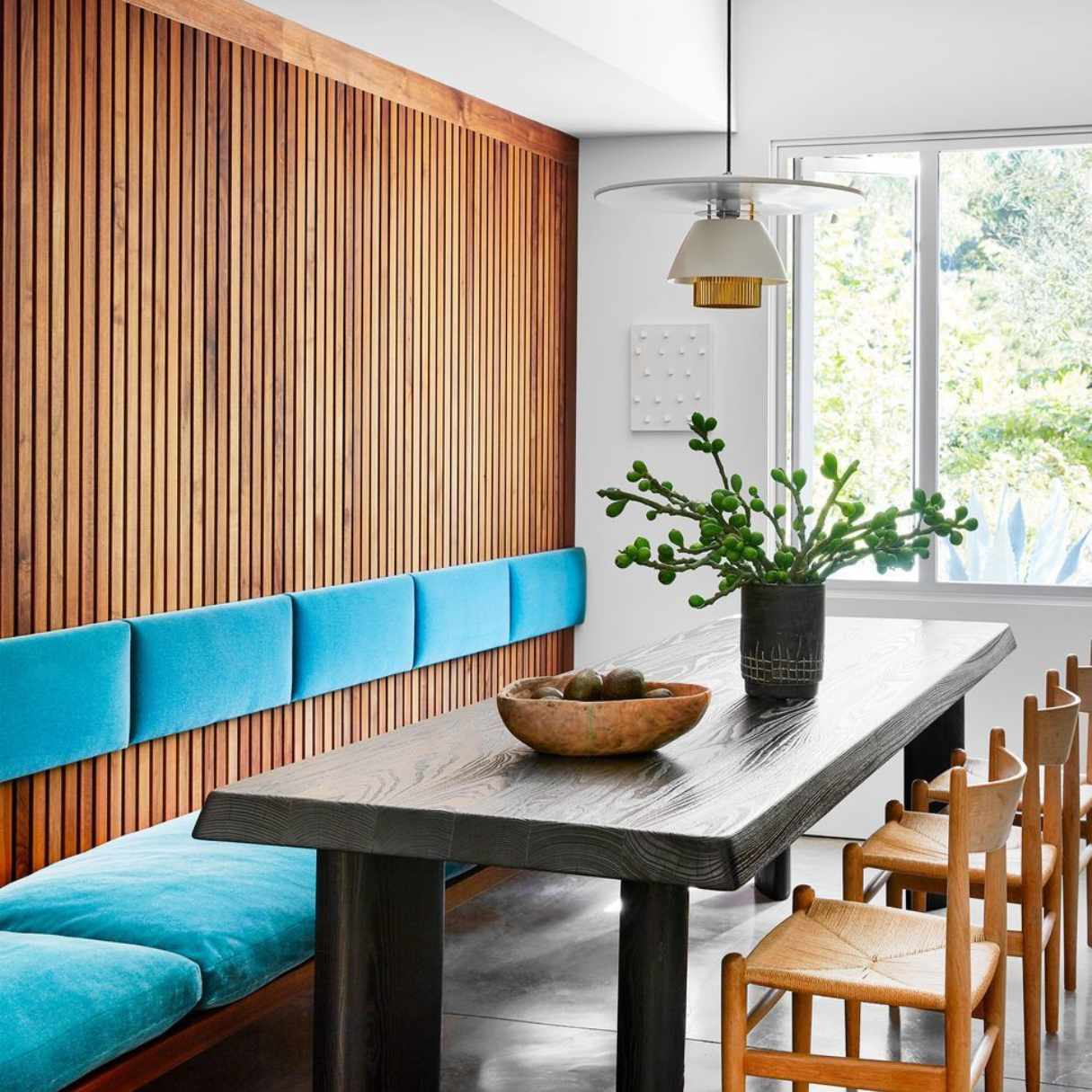

Interior Design
Accent Wall Ideas: 20 Of The Latest Ways To Create A Statement Feature
Modified: October 21, 2024
Looking for interior design inspiration? Check out these 20 accent wall ideas that are sure to make a statement in your home.
(Many of the links in this article redirect to a specific reviewed product. Your purchase of these products through affiliate links helps to generate commission for Storables.com, at no extra cost. Learn more)
Introduction
In interior design, an accent wall is a fantastic way to create a statement feature and add visual interest to a space. Whether you want to add a pop of color, an eye-catching pattern, or a unique texture, accent walls offer endless possibilities to showcase your personal style and elevate the ambiance of your home.
The best part about accent walls is that they can be easily customized to suit any room and aesthetic. From bold and vibrant colors to intricate patterns and textured finishes, there’s a wide range of options to choose from. In this article, we’ll explore 20 of the latest and most exciting accent wall ideas that are sure to inspire your next interior design project.
Key Takeaways:
- Inject personality and energy into your space with accent walls, whether it’s through bold colors, intricate patterns, or unique installations. Unleash your creativity and transform your room into a captivating haven.
- Elevate your interior design with accent walls that reflect your individuality and style. From vibrant colors to living plant walls, infuse your space with creativity and visual interest.
Bold and Vibrant Colors
One of the most popular accent wall ideas is to use bold and vibrant colors. Painting one wall in a room with a striking color can instantly make it the focal point and add a dynamic element to the space. Whether you opt for a deep, rich hue or a bright and energetic shade, bold colors can create a dramatic impact.
When choosing a bold color for your accent wall, consider the overall color scheme of the room. Look for complementary or contrasting colors that will make the accent wall stand out. For example, if your room has a neutral palette, a vivid red or electric blue accent wall can create a captivating contrast.
Remember, the key to successfully incorporating a bold color is balance. You don’t want the accent wall to overwhelm the rest of the room or take away from other design elements. Consider using the 60-30-10 rule, where the accent wall color makes up 10% of the room’s color, while the other two colors make up 60% and 30% respectively.
In addition to solid bold colors, you can also explore different techniques like color blocking or ombre effects to add more interest to your accent wall. These techniques involve blending multiple colors or transitioning from one shade to another, resulting in a visually dynamic and captivating accent wall.
When it comes to furniture and decor, pairing bold and vibrant accent walls with complementary accessories and furnishings can create a cohesive and visually striking look. Use neutral or muted colors to balance the intensity of the accent wall, allowing it to become the focal point of the room without overwhelming the space.
Overall, using bold and vibrant colors on an accent wall is a fantastic way to inject personality and energy into your space. It adds visual interest and can transform an otherwise plain room into an exciting and eye-catching haven.
Geometric Patterns
Geometric patterns have become increasingly popular in interior design, and using them on an accent wall can create a modern and visually captivating focal point in your space. Geometric patterns can range from simple shapes like triangles and hexagons to more intricate designs with interlocking lines and angles.
One of the simplest ways to incorporate geometric patterns on an accent wall is through wallpaper. There are countless options available, from bold and graphic patterns to more subtle and understated designs. Consider the scale of the pattern and choose one that suits the size of your wall and the overall aesthetic of the room.
If you prefer a more hands-on approach, you can use paint to create geometric patterns directly on the wall. Using painter’s tape, create the desired pattern, then paint over it with contrasting or complementary colors. Once the paint has dried, peel off the tape to reveal the clean lines and crisp edges of your geometric design.
Another option is to use tiles or wallpaper tiles with geometric patterns. These can be arranged in various configurations to create a unique and eye-catching accent wall. Mix and match different shapes, colors, and sizes to add depth and visual interest to the space.
When incorporating geometric patterns on an accent wall, it’s essential to consider the other design elements in the room. Keep the rest of the room’s decor relatively simple and let the accent wall take center stage. Choose furniture and accessories that complement the geometric patterns without competing with them.
Geometric patterns can work well in a variety of spaces, from living rooms and bedrooms to home offices and even bathrooms. They add a contemporary and artistic touch and can be customized to match your personal style and aesthetic preferences.
Overall, geometric patterns on an accent wall offer a fantastic opportunity to showcase your creativity and add a modern twist to your interior design. Whether you choose bold and vibrant colors or more subtle and monochromatic tones, geometric patterns are sure to make a statement and become a focal point in your space.
Textured Finishes
Adding textured finishes to an accent wall can instantly elevate the visual appeal of a room. Textures provide depth and dimension, creating a tactile experience that adds interest and sophistication to the space. There are various ways to incorporate textured finishes on an accent wall, each with its own unique effect.
One option is to use textured paint or plaster to create a visually interesting surface. Different techniques like sponge painting, rag rolling, or stucco application can be used to achieve various textures such as a rustic, distressed look or a smooth, polished finish. These textured finishes can add warmth and character to any room.
Another option is to use natural materials like reclaimed wood or stone veneer to create a textured accent wall. Wood paneling can bring warmth and a natural element to a space, while stone or brick cladding can create an industrial or rustic aesthetic. These materials bring a tactile quality to the room and can be used to create a focal point or highlight a specific area.
Wall tiles with 3D or wave patterns are also a popular choice for creating textured accent walls. These tiles come in a variety of materials, such as ceramic, porcelain, or even metal, and can be arranged in different patterns to create an eye-catching and tactile feature.
In addition to paint, natural materials, and tiles, wallpaper with textured finishes has also gained popularity. From grasscloth to embossed patterns, textured wallpaper can add depth and visual interest to an accent wall. It is a versatile option that comes in a range of colors and styles, allowing you to find the perfect texture to suit your aesthetic.
When incorporating textured finishes on an accent wall, it’s important to consider the overall design scheme of the room. Textured walls can create a more cozy and intimate atmosphere, so they work well in bedrooms, living rooms, or areas where you want to add a touch of warmth and visual intrigue.
Whether you choose textured paint, natural materials, tiles, or wallpaper, adding textural finishes to an accent wall can transform a space and take your interior design to the next level. The tactile nature of these finishes adds depth and visual interest, making the accent wall a standout feature in your room.
Wallpaper Accents
When it comes to creating an accent wall, wallpaper is an incredibly versatile and popular choice. With a wide range of designs, patterns, and textures available, wallpaper allows you to easily transform a plain wall into a stunning statement feature that reflects your personal style.
One of the advantages of using wallpaper for an accent wall is the ease of installation. Most wallpapers come with adhesive backing, making them simple to apply. You can choose to cover the entire wall or create a specific section, such as a recessed nook or alcove, for added visual interest.
There are endless options when it comes to choosing wallpaper for your accent wall. You can opt for bold and vibrant patterns to create a striking focal point, or choose subtle and delicate designs for a more understated elegance. Floral motifs, botanical prints, geometric patterns, and abstract designs are just a few of the possibilities.
Another popular trend in wallpaper accents is the use of mural wallpapers. These oversized designs cover the entire wall, creating a captivating and immersive experience. From serene nature scenes to urban landscapes and abstract artworks, murals can transport you to a different world and add a unique touch to your space.
Aside from pattern and design, you can also choose from a variety of textures when selecting wallpaper for your accent wall. Textured wallpaper adds depth and visual interest, creating a tactile experience. Options like grasscloth, embossed patterns, or metallic finishes can elevate the overall look and feel of the room.
When choosing wallpaper for your accent wall, consider the existing color scheme and style of the room. You can either complement the other walls or choose contrasting colors for a bold and impactful statement. Additionally, be sure to take into account the amount of natural light in the room, as this can affect the appearance of the wallpaper.
Wallpaper can be used in any room of the house, from the living room to the bedroom, and even the bathroom or kitchen. It allows you to express your personality and create a unique focal point that sets the tone for the entire space.
Overall, wallpaper accents are a versatile and trendy way to create a statement feature in your home. With a wide variety of designs, patterns, and textures to choose from, you can easily transform a plain wall into a visually stunning and personalized masterpiece.
Wood Paneling
Wood paneling is a classic and timeless way to create an accent wall that exudes warmth and adds a touch of natural beauty to any space. Whether you prefer a rustic, reclaimed wood look or a more polished and contemporary finish, wood paneling can easily transform a plain wall into a stunning focal point.
There are various types of wood paneling to choose from, each with its own unique characteristics and aesthetic appeal. Tongue and groove paneling, for example, features interlocking edges that create a seamless and visually pleasing effect. Shiplap paneling, on the other hand, has overlapping boards that add texture and dimension.
One of the advantages of wood paneling is its versatility. It can be used in a wide range of design styles, from farmhouse and rustic to modern and industrial. You can choose to cover the entire wall with wood paneling for a dramatic effect, or create a specific section to highlight a particular area, such as a fireplace or TV wall.
In addition to the variety of wood paneling styles, there is also a wide range of wood species to choose from. From rich and dark woods like mahogany and walnut to lighter options like pine and oak, each wood species brings its own unique color and grain pattern, adding to the overall aesthetic of the room.
When incorporating wood paneling on an accent wall, consider the overall design and color scheme of the room. Wood paneling tends to add warmth and depth, so it pairs well with neutral tones and earthy color palettes. However, you can also use it to create a striking contrast with bold or vibrant colors.
Aside from the traditional horizontal installation of wood paneling, you can also experiment with vertical or diagonal orientations to create a unique and visually interesting pattern. Additionally, you can choose to leave the wood paneling in its natural finish, stain it to enhance the color, or even paint it in a hue that complements the room’s decor.
Wood paneling is not limited to just walls. You can also use it to create an accent ceiling or even a cozy wood-clad alcove or nook. The possibilities are endless, allowing you to customize the space to your liking and create a warm and inviting atmosphere.
Overall, wood paneling is a classic and versatile option for creating an accent wall. It adds character and texture to a room, bringing a natural and timeless beauty that can enhance any interior design style.
Stone or Brick Cladding
Stone or brick cladding is a popular choice for creating accent walls that bring a rustic and textured charm to any space. It adds a sense of timeless elegance and creates a visually striking feature that can transform the entire room.
Stone and brick cladding come in various forms, including natural stone veneer, manufactured stone panels, or reclaimed bricks. These materials offer a range of colors, textures, and finishes, allowing you to select the perfect style to suit your design aesthetic.
One of the advantages of stone or brick cladding is its durability and longevity. These materials are resistant to wear and tear, making them ideal for high-traffic areas or places prone to moisture, such as bathrooms or kitchens.
When incorporating stone or brick cladding, you can choose to cover the entire wall or create a specific section as a focal point. A full wall of cladding can create a dramatic and rustic ambiance, while a smaller section can add texture and visual interest to an otherwise plain space.
The installation process for stone or brick cladding can vary depending on the type of material. Natural stone veneer often requires professional installation, as it requires precision in cutting and placement. Manufactured stone panels, on the other hand, are designed for easy installation and can be a more DIY-friendly option.
When selecting the type of stone or brick cladding, consider the overall design scheme and color palette of the room. Natural stone offers a range of earthy tones, from warm beiges and browns to cool grays and blues. Brick, on the other hand, offers a distinctive red or brown hue that adds a touch of rustic charm.
Stone or brick cladding can be incorporated in a variety of spaces, from living rooms and bedrooms to entryways and even outdoor areas. They work exceptionally well in rooms with a rustic, industrial, or farmhouse design style, adding texture and character to the space.
To enhance the overall look and feel of the room, consider pairing stone or brick cladding with other natural materials like wood or metal. These materials complement each other and create a cohesive and visually engaging aesthetic.
Overall, stone or brick cladding is a versatile and visually appealing option for creating accent walls. With their rustic and textured charm, they bring a sense of sophistication and natural beauty to any space, making them a popular choice among interior designers and homeowners alike.
Mirrored Paneling
Mirrored paneling is a unique and glamorous option for creating an accent wall that adds brightness, depth, and a touch of luxury to any space. Mirrors have the ability to reflect light, making rooms appear larger and brighter, while also adding a stylish element to the decor.
One of the key benefits of using mirrored paneling for an accent wall is its ability to create the illusion of space. Mirrors have a transformative effect, making small rooms appear bigger and more open. This makes them an excellent choice for spaces like hallways, small living rooms, or bedrooms.
Mirrored panels are available in a variety of shapes and sizes. You can choose to cover the entire accent wall or create a specific section using smaller panels or tiles. Consider the layout of the room and the desired effect you want to achieve when deciding on the placement and size of the mirrored panels.
In addition to traditional flat mirrors, you can also explore alternative options like antiqued or smoked mirrors. These variations add a touch of intrigue and help create a more unique and customized look for your accent wall.
When incorporating mirrored paneling, be mindful of the surrounding decor. Mirrors reflect and amplify everything around them, so it’s important to consider the placement of furniture and decorative elements to avoid overwhelming the space with too much visual clutter.
Mirrored accent walls work well in a variety of design styles, from modern and contemporary to glamorous and eclectic. They can be particularly effective in spaces with minimal natural light, as the mirrors will help bounce light around the room, creating a brighter and more inviting atmosphere.
To further enhance the impact of mirrored paneling, consider incorporating strategic lighting. This can include wall sconces, pendant lights, or even recessed lighting to highlight the mirrored wall and add depth to the space.
It’s worth noting that mirrored paneling requires careful installation to ensure a seamless and polished look. Professional installation is recommended to ensure the mirrors are secure and properly aligned.
Overall, mirrored paneling offers a glamorous and stylish option for creating an accent wall. Its ability to reflect light and create the illusion of space adds a touch of elegance and luxury to any room, making it a popular choice among interior designers and homeowners looking to make a statement.
Chalkboard or Whiteboard Walls
Chalkboard or whiteboard walls are a fun and functional way to create an interactive and creative accent wall in any space. These walls allow you to write, draw, and express your creativity directly on the surface, making them perfect for brainstorming, jotting down reminders, or simply adding a playful element to your decor.
Chalkboard walls are typically painted with a special chalkboard paint that creates a smooth and writable surface. You can choose to cover the entire wall or create a smaller section as a focal point. Chalkboard walls work particularly well in kitchens, home offices, or children’s playrooms, where you can write recipes, to-do lists, or encourage artistic expression.
Whiteboard walls, on the other hand, are coated with a dry erase paint that allows you to easily write and wipe off markers. This option is more common in office spaces, meeting rooms, or collaborative work environments, where you can easily brainstorm ideas, sketch diagrams, or jot down important notes.
One of the advantages of having a chalkboard or whiteboard wall is the versatility they offer. You can change the content on the wall as often as you like, which makes them ideal for dynamic and ever-evolving spaces. Plus, they can be a great tool for enhancing productivity, creativity, and organization.
As with any accent wall, it’s important to consider the rest of the decor when incorporating a chalkboard or whiteboard wall. You can make the wall stand out by framing it with molding or using contrasting paint colors to draw attention to the area. Additionally, considering the placement of furniture and ensuring there is enough space for writing or drawing is essential.
When using a chalkboard or whiteboard wall, it’s important to use appropriate writing tools and erasers. Chalk or chalkboard markers are commonly used for chalkboard walls, while dry erase markers are suitable for whiteboard walls. Additionally, keeping a soft cloth or eraser nearby ensures easy cleanup and maintenance of the wall’s surface.
To add some visual interest and enhance the overall aesthetic, you can also incorporate decorative elements like colorful chalk holders, magnetic strips, or even framed artwork around the chalkboard or whiteboard wall.
Overall, chalkboard or whiteboard walls offer a functional and creative solution for accent walls. They provide a space for expression, organization, and innovation, making them a popular choice in both personal and professional settings. So, let your imagination run wild and turn an ordinary wall into a canvas for your ideas!
Tile Accents
Tile accents offer a versatile and visually appealing option for creating an accent wall that adds texture, color, and personality to any space. With endless options in terms of size, shape, color, and design, tiles allow you to create a truly customized and unique focal point in your room.
One of the benefits of using tiles for an accent wall is their durability and ease of maintenance. Tiles are resistant to stains, water, and wear, making them ideal for areas prone to moisture, such as bathrooms or kitchens. They are also easy to clean, ensuring that your accent wall stays looking fresh and vibrant for years to come.
When it comes to tile accents, there are various options to choose from. You can opt for classic ceramic or porcelain tiles, which come in a wide range of colors and finishes. These tiles can be laid in a traditional grid pattern or arranged in more intricate designs, such as herringbone or chevron.
For a more luxurious and glamorous effect, consider using glass or mirrored tiles. These tiles reflect light and create a sense of depth, adding a touch of elegance and sparkle to your accent wall. They are perfect for creating a statement in areas like living rooms, dining rooms, or bedrooms.
Natural stone tiles, such as marble or travertine, offer a timeless and earthy option for creating a stunning accent wall. The unique patterns and textures of these tiles add a sense of luxury and sophistication to any room. They work particularly well in spaces that prioritize a natural and organic aesthetic.
Mosaic tiles are another popular choice for creating tile accents. These small tiles are typically used to form intricate patterns or images on the wall. Mosaic accents can bring a sense of artistry and creativity to your space, allowing you to showcase your personal style.
To create an impactful and visually striking tile accent, consider using tiles in bold and contrasting colors. For example, you can create a stunning black and white pattern or opt for vibrant and eye-catching hues to make your accent wall pop. These bold tile choices can create a dramatic statement in any room.
When incorporating tile accents, it’s important to consider the overall design scheme and color palette of the room. Choose tiles that complement the existing decor and create a harmonious look. Additionally, consider the scale of the tiles in relation to the size of the wall to ensure a balanced and proportionate design.
Overall, tile accents offer a wide range of options to create a unique and visually captivating accent wall. Whether you choose ceramic, glass, natural stone, or mosaic tiles, these accents can transform your space and add a touch of elegance, texture, and color that truly reflects your personal style.
Mural or Trompe-l’œil Designs
A mural or trompe-l’œil design is an excellent way to create an accent wall that becomes a breathtaking work of art within your space. These intricate and visually captivating designs can transport you to different worlds, create optical illusions, or simply add a unique and artistic touch to your room.
Murals are large-scale artworks that cover an entire wall or a significant portion of it. They can be painted directly on the wall or created on a removable wallpaper and installed like a traditional wall covering. Murals offer limitless possibilities for expressing your creativity and personal style.
One popular approach to mural designs is to bring nature indoors. You can have a serene forest scene, an underwater paradise with colorful marine life, or a vibrant floral garden adorning your accent wall. These nature-inspired murals can evoke a sense of tranquility and create a peaceful ambiance in any space.
Alternatively, you can opt for abstract or geometric designs that make a bold and contemporary statement. These murals can feature vibrant colors, interesting shapes, and captivating patterns, making them the centerpiece of your room’s decor. Abstract murals allow for interpretation and can spark conversation among viewers.
Trompe-l’œil, which means “fool the eye” in French, refers to a painting technique that creates the illusion of three-dimensional objects or spaces. This technique can transform a flat wall into a seemingly realistic scene, such as a window with a stunning view, a bookshelf filled with books, or even an entrance to a different room.
When incorporating mural or trompe-l’œil designs, it’s essential to consider the overall theme and style of the room. A mural should harmonize with the existing decor, furniture, and color scheme. Consider the size and scale of the wall when choosing the design to ensure that it doesn’t overwhelm the space.
Furthermore, lighting plays a crucial role in showcasing the mural or trompe-l’œil design. Strategically placed lighting fixtures can enhance the depth and details, creating a more immersive and realistic effect. Experiment with different lighting angles and intensities to find the perfect balance.
Whether you choose a nature-inspired mural, an abstract masterpiece, or a trompe-l’œil design, these accent walls are sure to become a focal point and conversation starter in your space. They bring artistry and creativity into your room, allowing you to enjoy a unique and visually stunning experience every day.
Consider using bold and contrasting colors for your accent wall to make a strong statement in the room. This can help create a focal point and add visual interest to the space.
Abstract Art
Abstract art is a captivating and versatile choice for creating an accent wall that sparks intrigue and adds a modern touch to any space. With its emphasis on shapes, colors, and forms that transcend traditional representations, abstract art allows for endless possibilities and interpretations.
When incorporating abstract art on an accent wall, you have several options. One approach is to display a large-scale painting or print that spans the entire wall, becoming the focal point of the room. This dramatic statement piece can create a bold and vibrant atmosphere, infusing the space with energy and personality.
For a more eclectic look, you can create a gallery-style accent wall by hanging multiple abstract artworks together. Mix and match different sizes, styles, and colors to create a visually dynamic display. This approach allows you to showcase your personal taste and curate a collection that tells a story.
If you’re feeling particularly adventurous, you can even create your own abstract mural using paint or removable wallpaper. This hands-on approach gives you the freedom to express your creativity and design a unique accent wall that perfectly suits your style and vision.
Abstract art offers a range of possibilities for adding color to your accent wall. You can choose vibrant and contrasting colors for a bold and energetic statement, or opt for more muted and complementary tones for a sophisticated and calming effect. Consider the existing color palette of the room and select abstract art that harmonizes or creates an intentional contrast.
When selecting abstract art for your accent wall, explore different styles and techniques, from geometric abstraction to expressionist brushstrokes. Each approach offers a distinct aesthetic and can evoke different emotions and moods, so choose the style that resonates with you and complements the overall design of the room.
Incorporating lighting is crucial for showcasing abstract art and creating the desired ambiance. Consider using track lighting or picture lights to highlight the artwork and create an eye-catching focal point. Experimenting with different lighting angles and intensities can enhance the textures and colors of the artwork, bringing it to life.
Abstract art accent walls work well in various spaces, from living rooms and dining areas to home offices and bedrooms. They add a touch of sophistication and artistic flair, making a statement about your unique taste and creating a conversation piece for guests.
Overall, abstract art accent walls offer an exciting and visually stimulating option to transform your space. They allow for personal expression, experimentation, and customization, making them a perfect choice for individuals who appreciate contemporary art and want to infuse their personality into their interior design.
Moroccan or Middle Eastern Patterns
Moroccan or Middle Eastern patterns bring a rich and exotic flair to accent walls, creating a captivating ambiance and transporting you to a world of vibrant colors and intricate designs. These patterns are known for their complexity, geometric shapes, and bold use of hues, making them a popular choice for adding a touch of global elegance to any space.
When incorporating Moroccan or Middle Eastern patterns on an accent wall, you have several options. One approach is to use wallpaper with these intricate designs. There are numerous options available that feature the iconic arabesque motifs, geometric tessellations, or the famous Moorish patterns. Wallpaper allows for easy installation and can instantly transform a plain wall into a stunning work of art.
If you prefer a more hands-on approach, you can create a stencil using Moroccan or Middle Eastern patterns and apply them directly to the wall. This DIY method gives you the freedom to customize the design and choose the colors that best suit your style. By using different paint colors or metallic finishes, you can enhance the intricate details of the patterns and create a one-of-a-kind accent wall.
Another option is to incorporate Moroccan or Middle Eastern tiles. These tiles are known for their vibrant colors and geometric designs, often seen in Moroccan riads or traditional courtyards. You can create an accent wall by covering the entire surface with these stunning tiles or use smaller tile accents to create a pattern or border.
When using Moroccan or Middle Eastern patterns, be mindful of the overall color scheme and design of the room. These patterns are typically bold and vibrant, so they work well in spaces that embrace a lively and eclectic aesthetic. Consider incorporating neutral or muted tones in the rest of the room’s decor to balance the visual impact of the accent wall.
Lighting plays an essential role in showcasing Moroccan or Middle Eastern patterns. Consider incorporating warm and soft lighting fixtures to highlight the details and create an inviting and cozy atmosphere. Wall sconces, pendant lights, or even decorative lanterns can enhance the beauty of the patterns and add an authentic touch to the space.
Overall, Moroccan or Middle Eastern patterns offer a unique and visually captivating option for accent walls. They bring a touch of exoticism, rich cultural heritage, and intricate craftsmanship to your space, instantly transforming it into a stunning and enchanting oasis.
Metallic Finishes
Metallic finishes are a sleek and modern choice for creating an accent wall that adds a touch of elegance, glamour, and sophistication to any space. Whether you prefer the shimmering allure of gold, the cool elegance of silver, or the boldness of copper, metallic finishes can instantly elevate the aesthetic of a room.
When it comes to incorporating metallic finishes on an accent wall, there are several options to consider. One popular choice is using metallic paint. This allows you to achieve a smooth and reflective finish that catches the light beautifully. Metallic paint can be applied with a roller or brush, giving you control over the intensity and coverage of the metallic effect.
Another option is using metallic wallpaper. Metallic wallpapers feature a reflective surface that adds depth and dimension to your accent wall. With a range of designs and textures available, you can find a metallic wallpaper that suits your style, whether you prefer a subtle and understated sheen or a bold and eye-catching pattern.
If you want to take your metallic accent wall to the next level, consider using metallic tiles. These tiles can be made of materials like stainless steel, aluminum, or even glass with a metallic finish. Their reflective properties create a stunning visual effect, making them ideal for creating a luxurious and contemporary focal point in your space.
When incorporating metallic finishes, it’s essential to consider the overall color scheme and design of the room. Metallic accents can work well with both neutral and bold color palettes. For a modern and sophisticated look, pair metallic finishes with monochromatic colors like black, white, or gray. If you want a more dramatic effect, combine metallic finishes with vibrant colors to create a striking contrast.
Lighting is crucial in showcasing the beauty of metallic finishes. Consider adding accent lighting or directional fixtures to highlight the reflective surface and create a dazzling effect. This will enhance the shimmer and shine of the metallic accents, making them a stunning focal point that catches the eye.
It’s essential to strike a balance when incorporating metallic finishes, as too much can overpower the space. Consider using metallic finishes on one accent wall to create a focal point, while keeping the other walls and furniture relatively neutral or subtle to allow the metallic effect to shine. This approach ensures a harmonious and visually pleasing result.
Overall, metallic finishes offer a modern and luxurious option for accent walls. They bring a touch of glamour and sophistication to any space, creating an atmosphere that is both visually stunning and on-trend. With their reflective properties and versatility, metallic accents can transform your room into a captivating and elegant haven.
Ombre Effect
The ombre effect is a trendy and visually captivating choice for creating an accent wall that adds depth, dimension, and a touch of artistic flair to your space. Derived from the French word meaning “shaded,” the ombre effect involves a gradual transition of color from light to dark or vice versa, resulting in a stunning gradient effect.
There are various ways to achieve the ombre effect on an accent wall. One approach is to use multiple shades of the same color, starting with the lightest shade at the top or bottom of the wall and gradually transitioning to the darkest shade at the opposite end. This creates a smooth and seamless gradient that adds subtle sophistication to the room.
Another option is to incorporate contrasting colors for a more dramatic ombre effect. This involves selecting two or more colors that complement each other and blending them together to create a bold and eye-catching transition. This vibrant ombre effect can make a strong visual statement, particularly in modern or eclectic spaces.
To achieve the ombre effect, you can use paint or wallpaper. If using paint, start by priming the wall and dividing it into sections with painter’s tape. Begin with the lightest color at the top or bottom and gradually mix in more of the darker color as you move towards the opposite end. To create a seamless transition, use a dry brush or sponge to feather and blend the colors together.
If using wallpaper, opt for a design that features an ombre effect. These wallpapers are pre-printed with a gradient pattern, making it easier to achieve a flawless and consistent transition. Simply measure and cut the wallpaper to fit the wall and follow the manufacturer’s instructions for installation.
The ombre effect works well in different spaces and can be adapted to suit various styles. In bedrooms, consider a soothing ombre effect in pastel shades for a calming and serene atmosphere. In living rooms or dining areas, a bold ombre effect with vibrant colors can create a focal point that adds energy and personality to the space.
When incorporating the ombre effect, consider the lighting in the room. Natural and artificial lighting can enhance the gradient effect, highlighting the subtle or bold transition of colors. Experiment with different lighting angles and intensities to find the right balance that accentuates the beauty of the ombre effect.
The ombre effect can be used on an entire wall or as a partial accent, such as on a recessed nook or behind a piece of furniture. Either way, it adds visual interest and makes a statement without overpowering the space.
Overall, the ombre effect offers a creative and modern option for accent walls. Whether you choose a subtle or bold transition, the gradual gradient of colors adds depth and visual intrigue to your space, turning a plain wall into a stunning work of art.
Gallery Wall
A gallery wall is a curated collection of artwork, photographs, and other decorative elements arranged on an accent wall, creating a visually stunning and personalized focal point. This versatile option allows you to showcase your creativity, interests, and memories while adding depth and personality to your space.
The beauty of a gallery wall lies in its flexibility and customization. You can mix and match various sizes, styles, and themes of artwork to create a cohesive and visually dynamic display. Whether you want to showcase a collection of paintings, family photographs, or even vintage posters, a gallery wall allows you to express your unique style.
When creating a gallery wall, start by selecting the artwork or photographs that you want to include. Choose pieces that have personal significance to you or complement the overall design scheme of the room. Consider the colors, subject matter, and the emotions they evoke when making your selections.
Before arranging the artwork on the wall, it is helpful to plan the layout by laying the pieces out on the floor or creating paper templates of the frames. This allows you to experiment with different arrangements until you find the perfect combination. You can go for a symmetrical layout with evenly spaced frames, a more eclectic mix with different sizes and orientations, or even create a gallery wall that follows a specific theme or color palette.
When it comes to hanging the artwork, there are a few options to consider. You can use traditional picture frames and hang them with nails or hooks. Alternatively, you can use adhesive picture hanging strips that allow for easy and damage-free installation. Another option is utilizing floating shelves to display your artwork, giving you the flexibility to rearrange the pieces whenever you’d like.
In addition to artwork, you can incorporate other decorative elements into your gallery wall. Consider adding mirrors, clocks, or even wall-mounted planters for added visual interest and variety. This adds an extra layer of dimension to the gallery wall and creates a more eclectic and unique display.
When arranging the artwork, keep the overall composition in mind. Start with a focal point, such as a larger piece or a family photograph, and arrange the other pieces around it. Aim for a balance of sizes, colors, and shapes to create a visually pleasing arrangement. Leave enough space between the pieces to allow each one to stand out and be appreciated individually.
A gallery wall can work well in various spaces, from living rooms and hallways to bedrooms and home offices. It transforms a plain wall into a showcase of your personal style and interests, acting as a conversation starter and reflecting your life’s journey.
Overall, a gallery wall offers a creative and customizable option for accent walls. It allows you to curate a collection of meaningful artwork and photographs that reflect your personality and create a visually stunning and engaging feature in your space.
Patterned Fabric Wall
Using patterned fabric to create an accent wall is a unique and stylish way to add texture, warmth, and a touch of luxury to your space. Fabric walls offer endless possibilities, allowing you to choose from a wide range of patterns, colors, and textures to suit your personal style and design aesthetic.
The first step in creating a patterned fabric wall is selecting the fabric itself. Consider the overall design scheme of the room and choose a fabric that complements the existing furniture and decor. From bold and vibrant patterns to subtle and understated designs, the options are limitless. You can select fabrics with geometric patterns, floral motifs, abstract designs, or even textured materials like velvet or silk.
To apply the fabric to the wall, start by preparing the surface. Ensure that the wall is clean, smooth, and free from any imperfections. If necessary, apply a primer to create a suitable base. Next, measure and cut the fabric to fit the dimensions of the wall, leaving a few inches of extra fabric on each side to ensure a proper fit.
There are different techniques to attach the fabric to the wall. One option is to use adhesive spray or fabric glue to secure the fabric directly to the wall. Another method is to use a starch-based fabric stiffener, which allows the fabric to adhere temporarily and can easily be removed without damaging the wall. Alternatively, you can use a combination of both methods for added security and ease of removal.
When applying the fabric, work from top to bottom, smoothing out any wrinkles or air bubbles along the way. Use a squeegee or a smooth, flat object to press the fabric onto the wall and ensure a tight and even bond. Trim any excess fabric using a sharp pair of scissors or a utility knife for a clean and finished look.
Incorporating a patterned fabric wall adds character and visual interest to a space. It can be particularly effective in bedrooms, living rooms, or dining areas, where you want to create a cozy and inviting atmosphere. The fabric also helps absorb sound, making it a great choice for rooms where noise reduction is desired.
When designing your space with a patterned fabric wall, consider the overall color scheme and other design elements. Choose fabrics that complement the existing furniture and decor and create a cohesive and harmonious look. You can use the colors and patterns in the fabric as a basis for selecting complementary accessories, such as throw pillows, rugs, or curtains.
Overall, a patterned fabric wall offers a unique and stylish option for accent walls. It allows you to incorporate texture, color, and pattern in a way that adds warmth, luxury, and visual intrigue to your space. With countless fabric choices available, you can create a customized and visually stunning feature that reflects your personal style.
Statement Lighting
Statement lighting is a powerful way to create an accent wall that not only illuminates your space but also adds a captivating focal point and a touch of artistic flair. From unique chandeliers to modern pendant lights, statement lighting fixtures can make a bold and stylish statement that enhances the ambiance and aesthetic of your room.
When it comes to incorporating statement lighting on an accent wall, there are several options to consider. One approach is to choose a large and eye-catching chandelier that serves as the centerpiece of the wall. Opt for a design that complements the overall style of the room, whether it’s modern, vintage, or eclectic. The chandelier’s size, shape, and materials will contribute to the visual impact it creates.
Pendant lights are also a popular choice for creating an accent wall with statement lighting. These hanging fixtures come in various shapes, sizes, and designs, allowing you to select one that suits your style and the dimensions of your space. Multiple pendant lights can be arranged in a row or cluster to create an intriguing and visually dynamic display on the accent wall.
Wall sconces or wall-mounted lights are another option for accent lighting. These fixtures can be vertically or horizontally mounted on the wall, creating a striking effect. Consider designs with unique shapes, finishes, or even adjustable features to add even more visual interest to the accent wall.
The location of your statement lighting on the accent wall will depend on the size and layout of the room. In dining areas, placing a chandelier directly above the table can create a dramatic and intimate setting. In living rooms or bedrooms, pendant lights or wall sconces can be positioned to highlight a specific area or architectural feature.
When incorporating statement lighting, consider the color palette and design elements of the room. Choose fixtures that complement and enhance the existing decor. Additionally, consider the lighting temperature and intensity to create the desired ambiance. Warm or soft lighting can create a cozy and inviting atmosphere, while cool or bright lighting can energize and make a bold statement.
Statement lighting not only serves as a functional light source but also as a unique piece of artwork that demands attention. It can transform a plain wall into an eye-catching feature and elevate the overall design of the room. Choose lighting fixtures that reflect your personal style and make a statement about your taste and creativity.
Overall, statement lighting on an accent wall offers a striking and visually captivating option for enhancing your space. The right lighting fixture can become the focal point of your room while illuminating it with style and sophistication. So, let your imagination shine and choose a statement lighting piece that truly makes a statement.
Oversized Clocks or Mirrors
Oversized clocks or mirrors are a fantastic choice for creating an accent wall that not only serves a functional purpose but also adds a bold and impressive design element to your space. These statement pieces instantly draw attention and become the focal point of the room, commanding both style and function.
Oversized clocks make a statement with their large size and intricate designs. They can add a sense of sophistication and nostalgia to any space, whether it’s a vintage-inspired clock with Roman numerals or a modern and minimalist design. Placing an oversized clock on an accent wall creates a striking visual impact, while also allowing you to keep track of time in a stylish way.
Oversized mirrors, on the other hand, can serve both a decorative and practical purpose. They reflect light and create an illusion of space, making a room appear larger and brighter. These mirrors come in various shapes, such as round, rectangular, or even irregular, and can feature unique frames or be frameless for a sleek and modern look.
The placement of oversized clocks or mirrors on an accent wall is crucial for achieving the desired effect. Consider the scale and proportion of the wall and the overall layout of the room. Hanging the clock or mirror in a centralized position can create balance and visual harmony. Alternatively, you can position it asymmetrically for a more eclectic and artistic display.
One option is to make the oversized clock or mirror the centerpiece of the accent wall. Surrounding it with complementary decor, such as wall sconces, framed artwork, or other smaller mirrors, can create a cohesive and visually pleasing arrangement. Pay attention to the scale and proportion of the surrounding decor to ensure that the centerpiece remains the star of the show.
Another approach is to create a gallery wall around the clock or mirror, incorporating an array of smaller artwork, photos, or other decorative elements. This eclectic mix adds visual interest and allows you to showcase your personal style, creating a dynamic and personalized feature on the accent wall.
In terms of the overall style and design, oversized clocks or mirrors can work well in various spaces. In a traditional or vintage setting, an ornate and embellished clock or mirror can add a touch of old-world charm. In a contemporary or minimalist space, a sleek and simple design can create a modern and sophisticated statement.
Lastly, consider the lighting in the room when incorporating oversized clocks or mirrors. Positioning them strategically near windows or opposite light sources can maximize their reflective properties and enhance the overall ambiance of the space. Experiment with different lighting angles and intensities to achieve the desired effect.
Overall, oversized clocks or mirrors offer a visually striking and functional option for accent walls. Their grandeur commands attention and adds a touch of elegance and personality to any room. So, whether you choose a statement clock or a captivating mirror, embrace the power of oversized accents to transform your space into a stunning masterpiece.
Bookshelf Accent Wall
A bookshelf accent wall is a creative and practical choice for showcasing your love for literature while adding texture, storage, and personality to your space. Whether you have a vast collection of books or want to display your favorite decor pieces, a bookshelf accent wall can create a stunning focal point that showcases your style and intellect.
To create a bookshelf accent wall, start by selecting the right type of bookshelf or shelving unit. It can be a standalone bookcase, a customized built-in, or even a series of floating shelves. Consider the size, style, and material that best suits your space and enhances the overall design aesthetic of the room.
Once you have the bookshelf or shelving unit in place, it’s time to organize and display your items. Arrange your books in an aesthetically pleasing way, grouping them by genre, color, or size. Mix vertical and horizontal stacks, and incorporate decorative bookends or book holders to add visual interest.
In addition to books, consider incorporating other decor pieces, such as small plants, framed photos, or decorative objects, to break up the monotony and add personality to the wall. This combination of books and decor creates a vibrant and eclectic display that showcases your personal style and interests.
One option for arranging the items on your bookshelf accent wall is to create a balanced and symmetrical layout. Place the larger books or decor pieces at the bottom or middle shelves, and gradually decrease the size as you move towards the top. This creates a visually pleasing flow and enhances the aesthetic appeal of the wall.
Alternatively, you can adopt a more artistic and asymmetric approach. Mix and match different sizes and styles of books and decor pieces, staggering them on the shelves. This creates a more dynamic and visually intriguing display that allows you to showcase your creativity and individuality.
Lighting plays an important role in highlighting your bookshelf accent wall. Consider incorporating subtle LED lights or spotlights to illuminate the shelves and draw attention to your display. This not only adds a warm and inviting ambiance but also creates a cozy reading nook when the lights are dimmed.
When designing your bookshelf accent wall, it’s important to consider the overall color scheme and design of the room. Choose a bookshelf color or finish that complements the surrounding furniture and decor. If you want the books and decor to be the focal point, consider opting for a neutral or understated bookshelf color to allow them to stand out.
A bookshelf accent wall can work well in various spaces, from living rooms and home offices to bedrooms and libraries. It adds a sense of intellectual curiosity and personalization to your space, inviting guests to peruse your collection and stimulating conversation.
Overall, a bookshelf accent wall offers a practical and visually appealing option for displaying your books and decor pieces. It adds texture, storage, and personality to your space while allowing you to showcase your style and passions. So, embrace your love for literature and transform your wall into a captivating bookshelf that enhances both the aesthetic and intellectual ambiance of your room.
Living Plant Wall
A living plant wall, also known as a vertical garden or green wall, is a stunning and eco-friendly choice for creating an accent wall that brings life, beauty, and a connection to nature into your space. These living artworks are not only visually captivating but also offer numerous health benefits, purify the air, and create a soothing and calming environment.
To create a living plant wall, start by selecting the right plants for your space. Choose plants that thrive in the lighting conditions and climate of the room. Consider factors such as air circulation, humidity levels, and maintenance requirements when making your selections. Opt for a mix of different plants, such as trailing vines, ferns, and colorful foliage, to add texture and variety to your living wall.
There are several ways to design and install a living plant wall. You can use a modular system that consists of individual plant containers that can be easily mounted onto the wall. These systems allow for flexibility in arranging the plants and easy maintenance. Alternatively, you can create a DIY living wall by mounting small pots or hanging planters on a trellis or wire mesh, creating a lush and organic display.
Before installing the plants, it’s important to consider the care and maintenance they will require. Ensure that the wall is properly prepared with a waterproof barrier to protect it from excess moisture. Use a lightweight and well-draining growing medium to provide nutrients and support for the plants. Additionally, consider the accessibility for watering, pruning, and eventual replanting or maintenance of the plants.
Proper lighting is essential for the success of your living plant wall. Assess the natural lighting conditions in the room and select plants that can thrive in the available light. If needed, supplement with artificial grow lights to provide the necessary light for the plants to thrive. Consider positioning the wall near a window or incorporating additional lighting fixtures to enhance the overall ambience and highlight the beauty of the plants.
When it comes to the design of your living plant wall, you can create a harmonious and balanced arrangement by positioning taller plants towards the back and shorter plants towards the front. Experiment with different textures, colors, and sizes to create an eye-catching and visually appealing composition. Consider incorporating trailing plants that cascade down the wall for added dimension and visual interest.
A living plant wall can work well in various spaces, including living rooms, kitchens, and offices. It creates a refreshing and vibrant atmosphere that promotes a sense of well-being and relaxation. Additionally, the plants help improve air quality by filtering out pollutants and increasing oxygen levels, making the space healthier and more enjoyable to be in.
Regular maintenance is important to keep your living plant wall thriving. Water the plants according to their specific needs, prune as necessary, and regularly check for signs of pests or diseases. Pay attention to the growth of the plants and adjust their placement or care as needed to ensure their long-term health.
Overall, a living plant wall offers a unique and visually stunning option for creating an accent wall that brings nature indoors. It adds a sense of tranquility, beauty, and environmental mindfulness to your space, creating a refreshing and inviting oasis within your home or office.
Read more: Living Room Accent Walls: Which To Paint?
Conclusion
Accent walls are a powerful tool in interior design, allowing you to infuse your space with personality, creativity, and visual interest. Whether you opt for bold colors, intricate patterns, textured finishes, or unique installations, accent walls can transform a plain room into a captivating and stylish haven.
From the bold and vibrant colors that create a focal point to the geometric patterns that add a modern twist, there are numerous options to choose from when designing an accent wall. Textured finishes, such as wood paneling or stone cladding, bring warmth and depth, while wallpaper accents offer endless possibilities for customization. Mirrored paneling adds a touch of glamour, while chalkboard or whiteboard walls encourage creativity and organization.
When incorporating accent walls, it’s important to consider the overall design scheme and flow of the room. Choose colors, patterns, and materials that complement the existing decor and create a cohesive and harmonious look. Lighting is also key in highlighting the beauty of the accent wall and enhancing its impact.
As a final touch, consider adding statement lighting, oversized clocks or mirrors, bookshelves, or even a living plant wall to make your accent wall truly stand out. These elements not only add functionality but also create a visual centerpiece that reflects your personal style and enhances the ambiance of your space.
In conclusion, accent walls offer endless possibilities to elevate your interior design and make a statement within your rooms. Whether you prefer vibrant colors, intricate patterns, or unique installations, accent walls provide the chance to express your creativity and create a space that reflects your individuality. So, unleash your imagination, embrace the power of accent walls, and transform your space into a visually stunning and captivating environment.
Frequently Asked Questions about Accent Wall Ideas: 20 Of The Latest Ways To Create A Statement Feature
Was this page helpful?
At Storables.com, we guarantee accurate and reliable information. Our content, validated by Expert Board Contributors, is crafted following stringent Editorial Policies. We're committed to providing you with well-researched, expert-backed insights for all your informational needs.
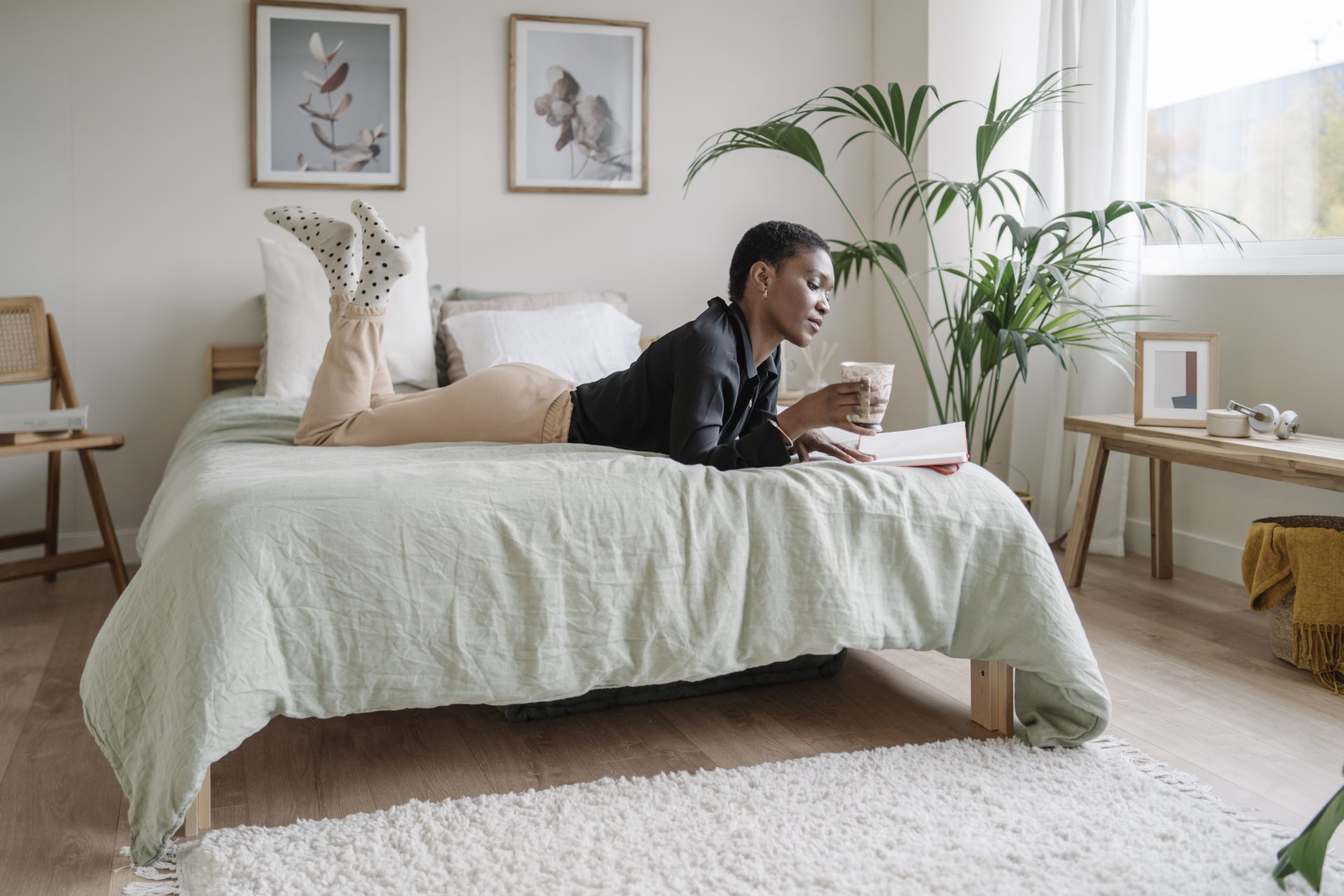
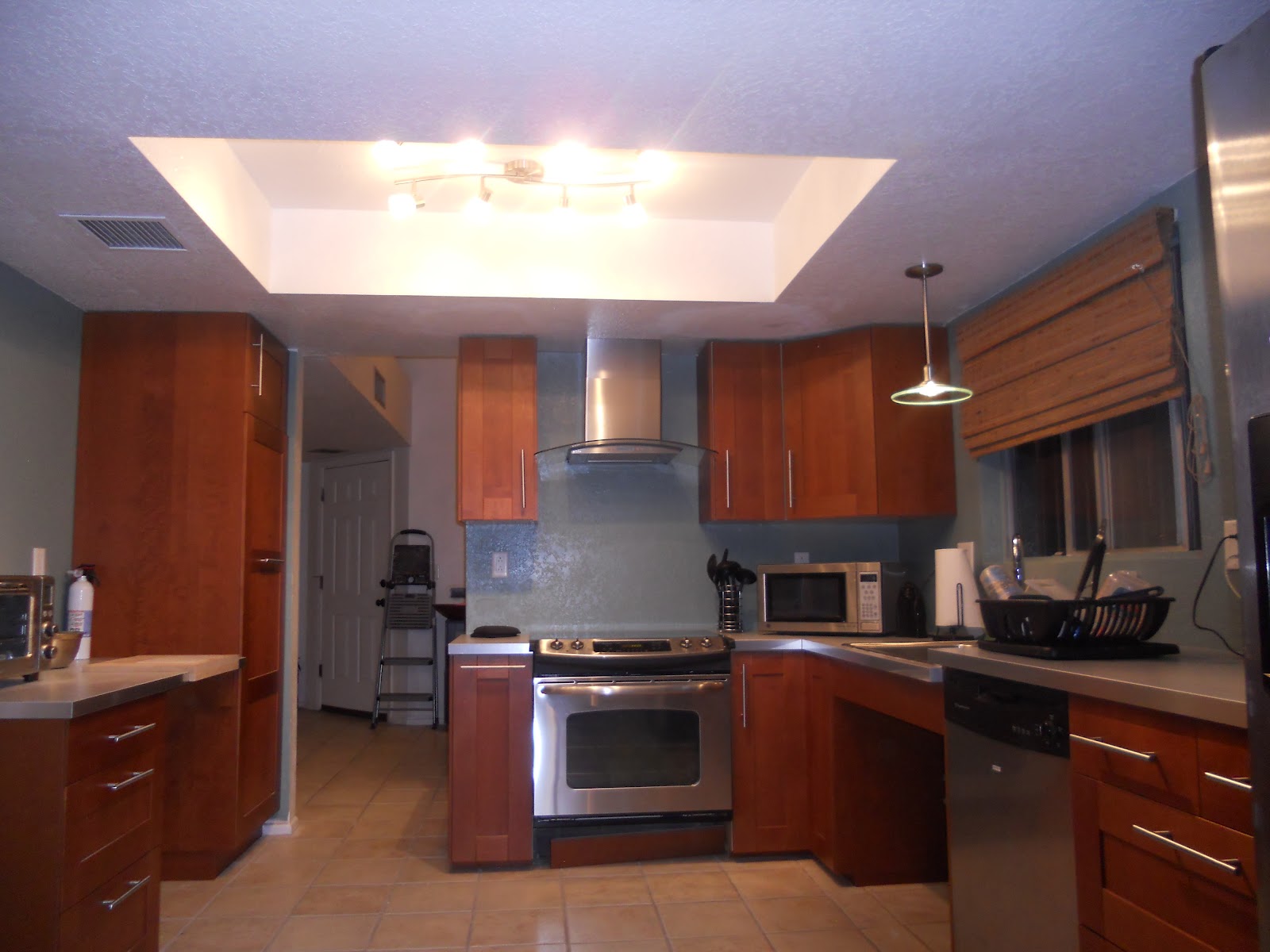
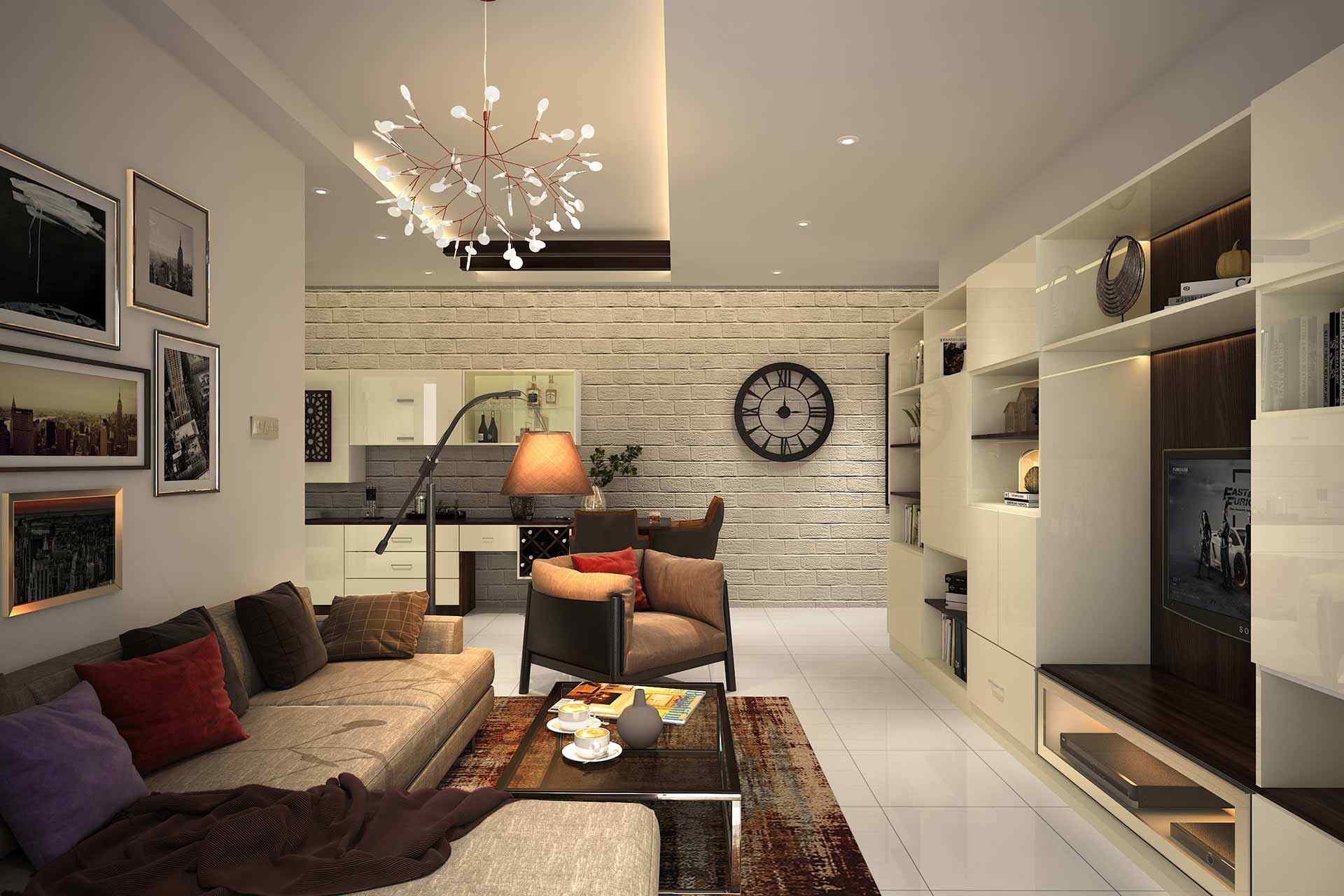
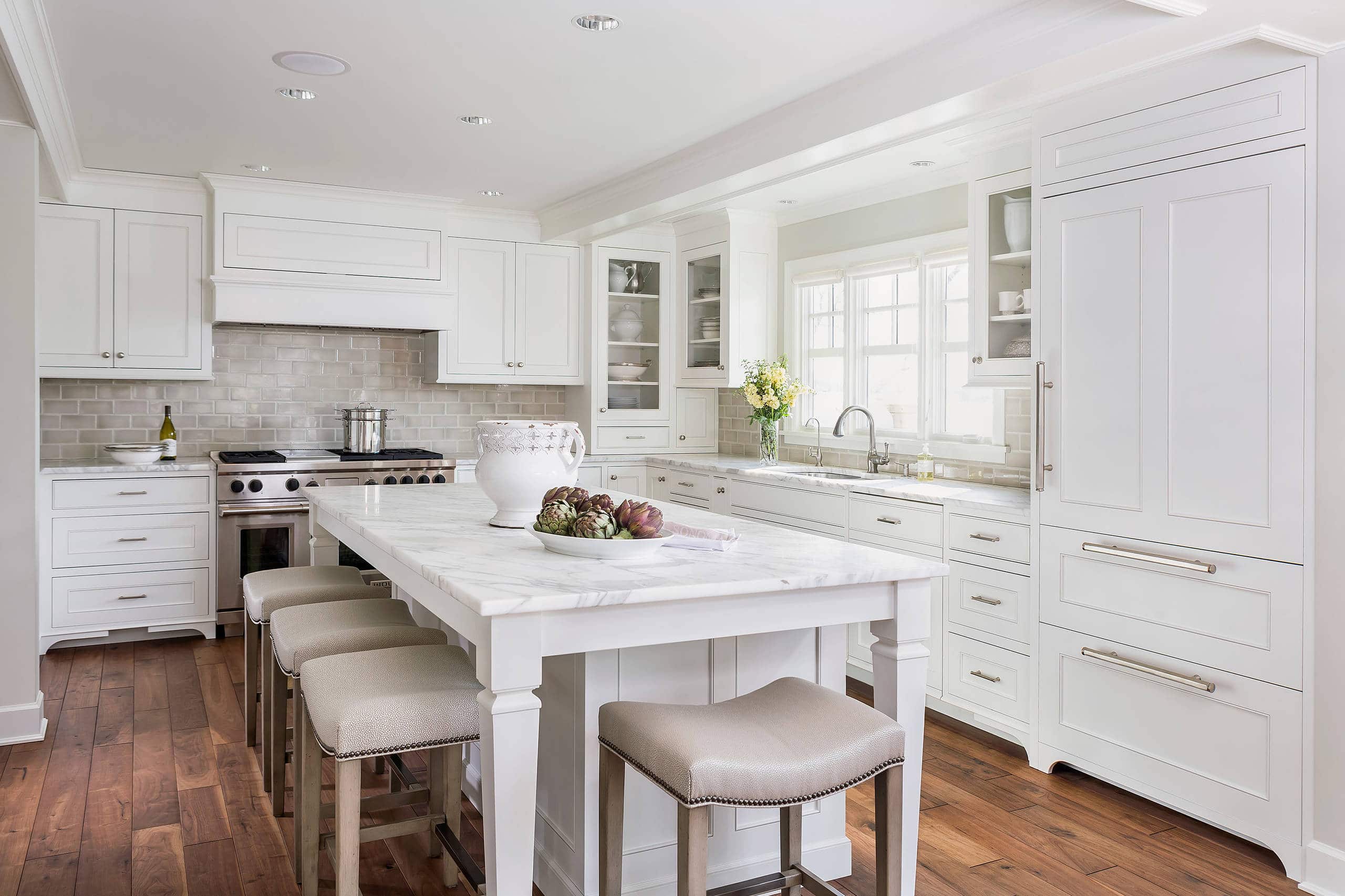
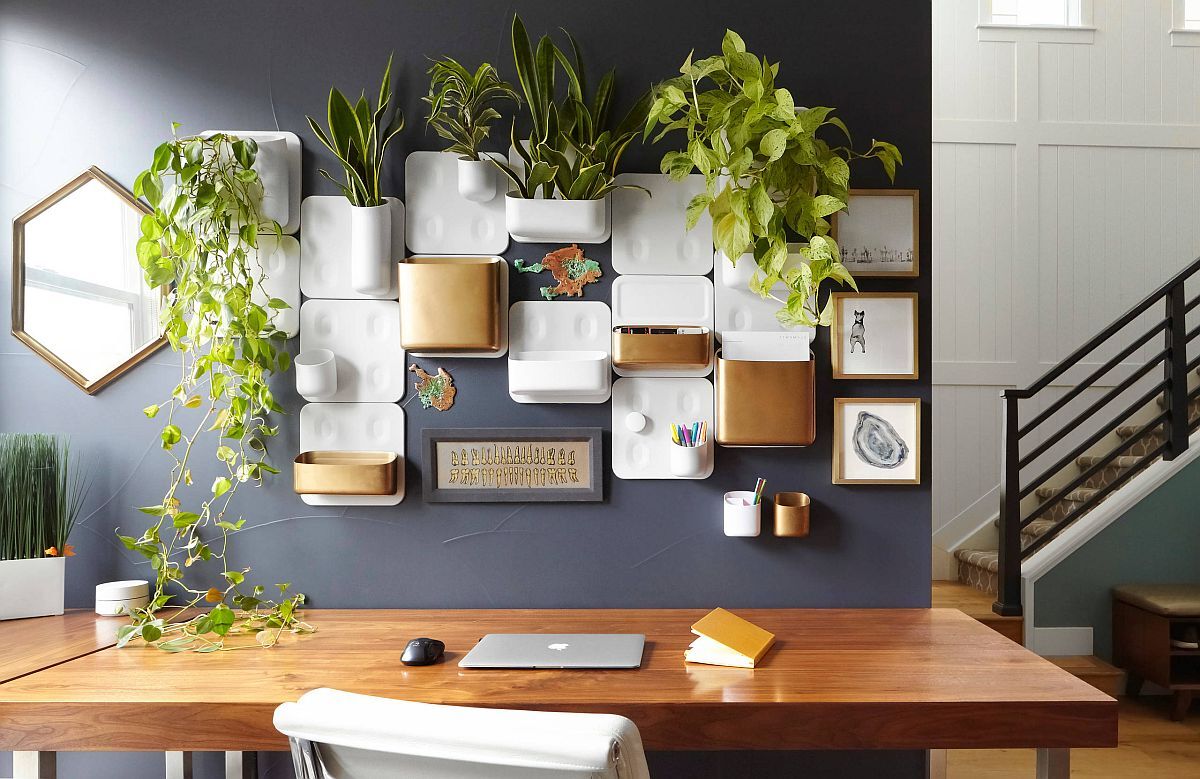
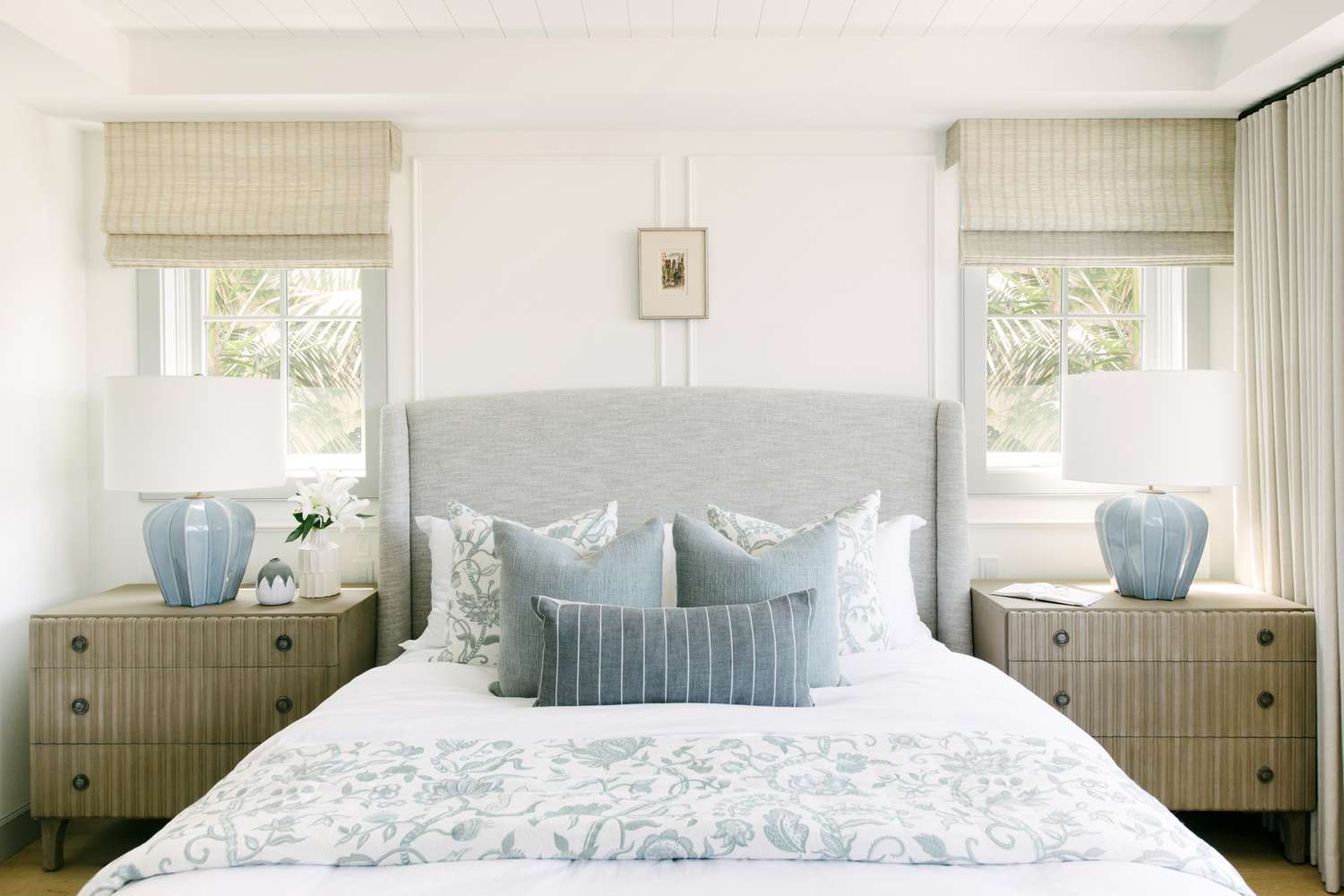
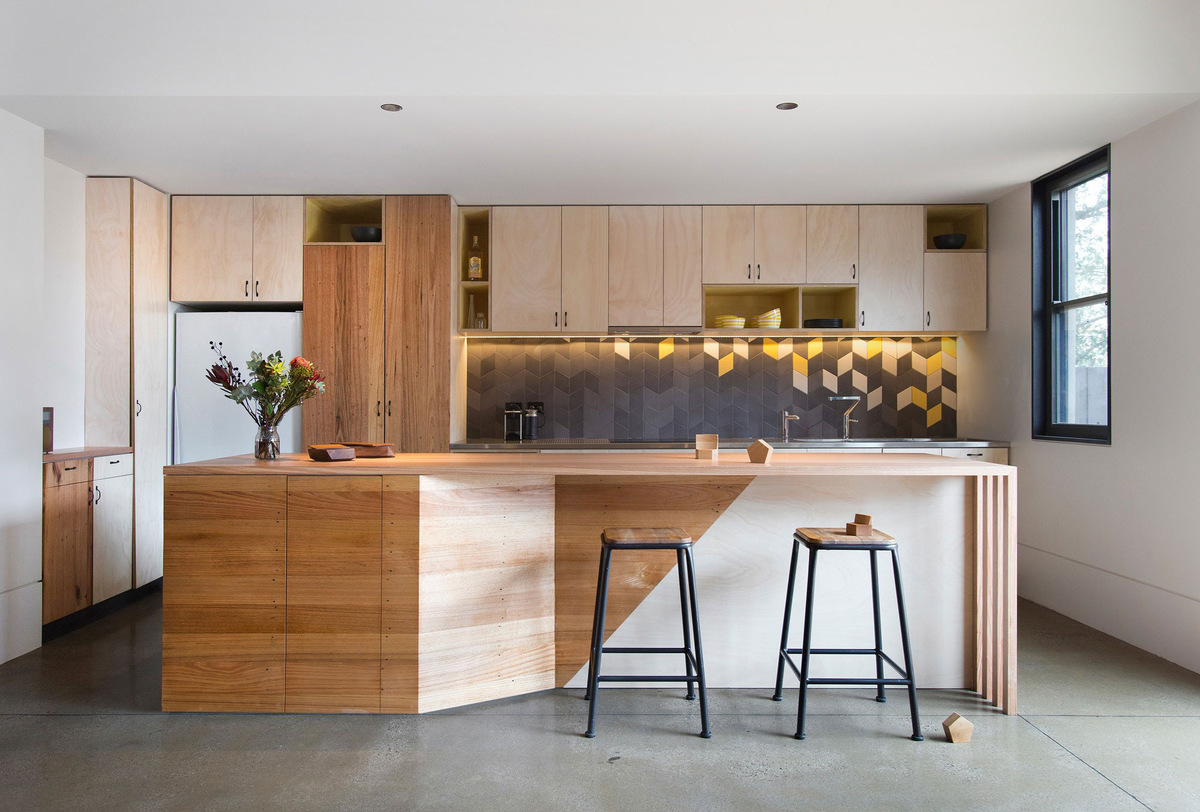
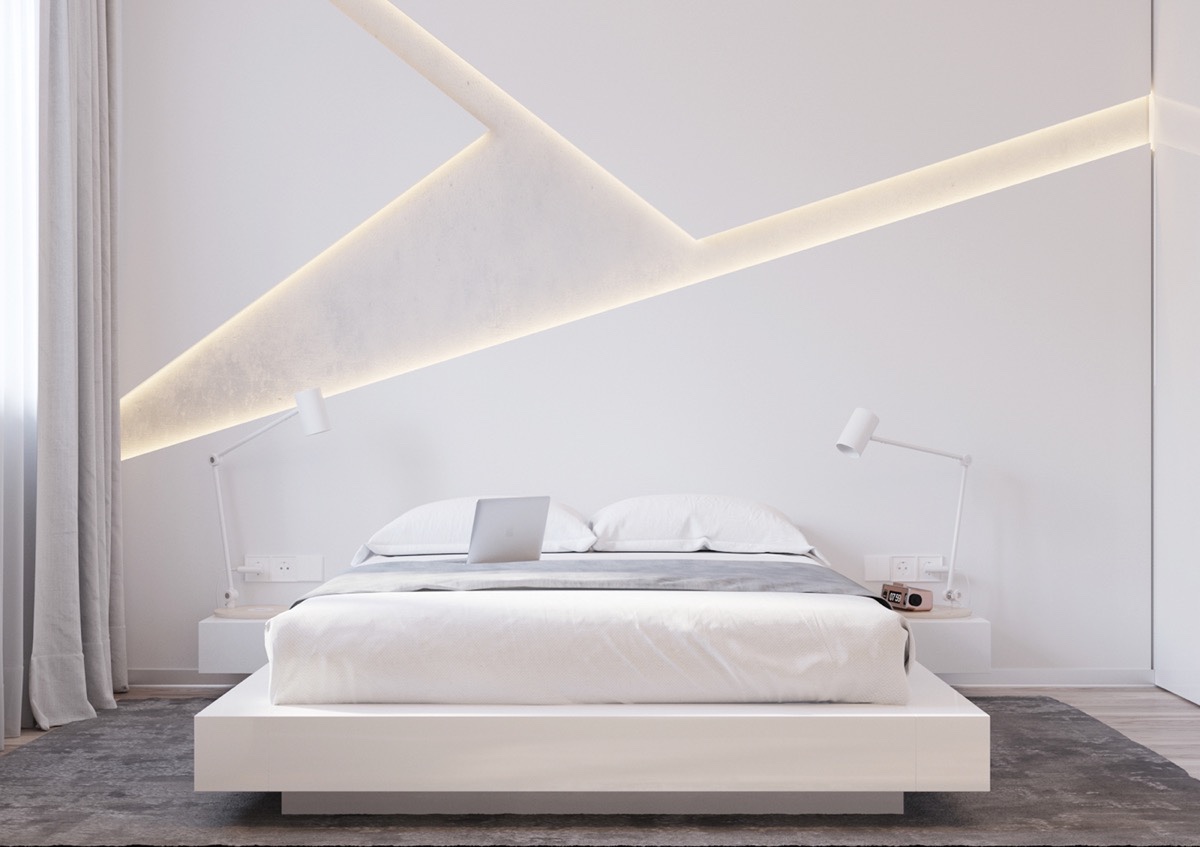
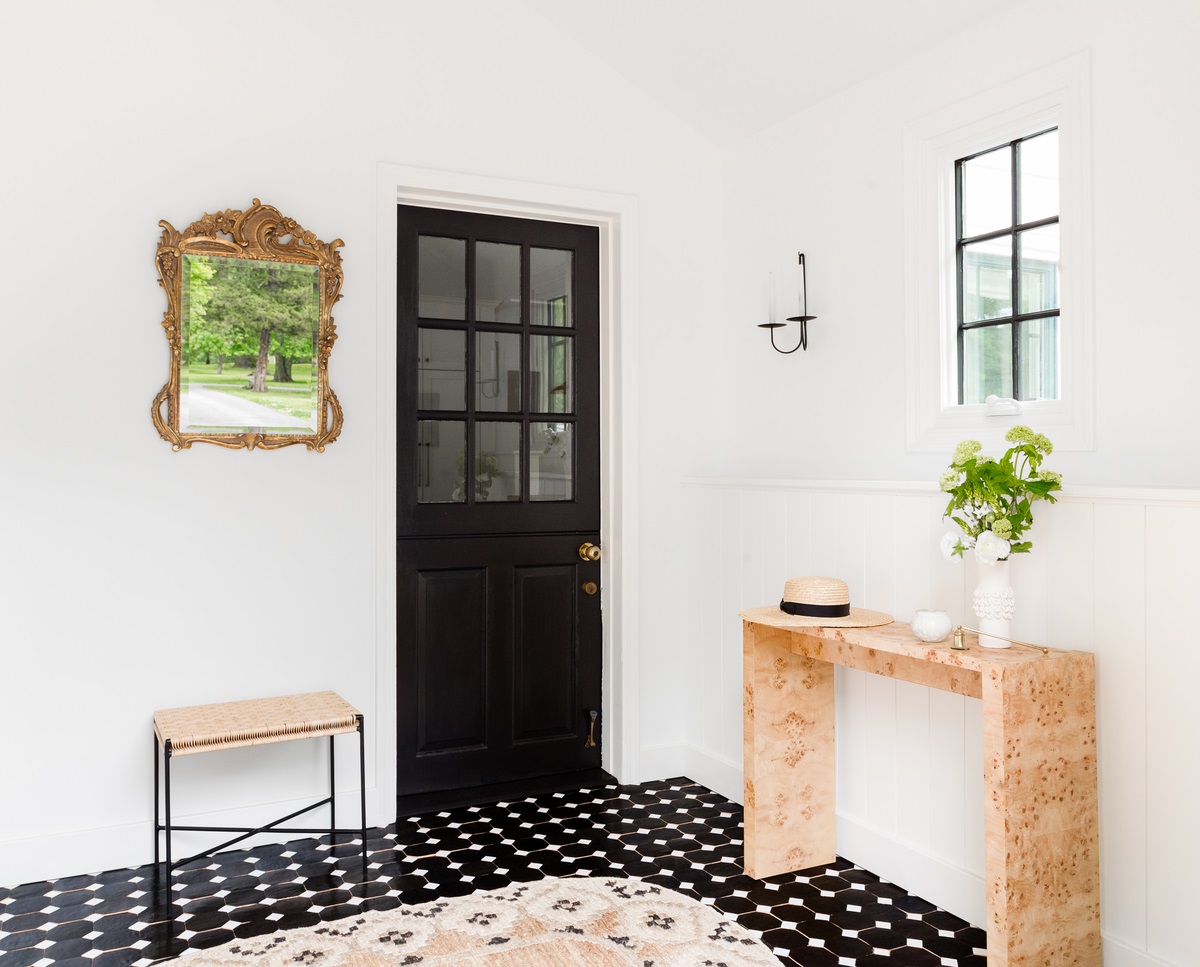
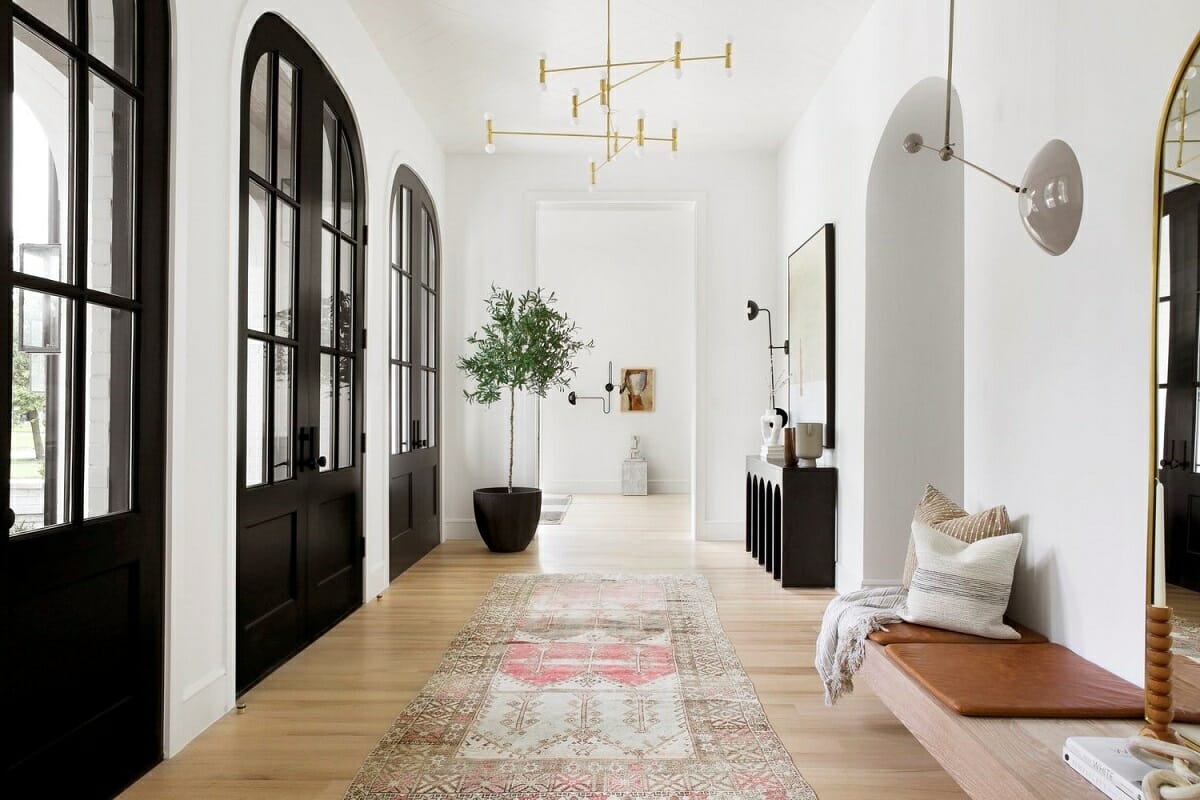

0 thoughts on “Accent Wall Ideas: 20 Of The Latest Ways To Create A Statement Feature”